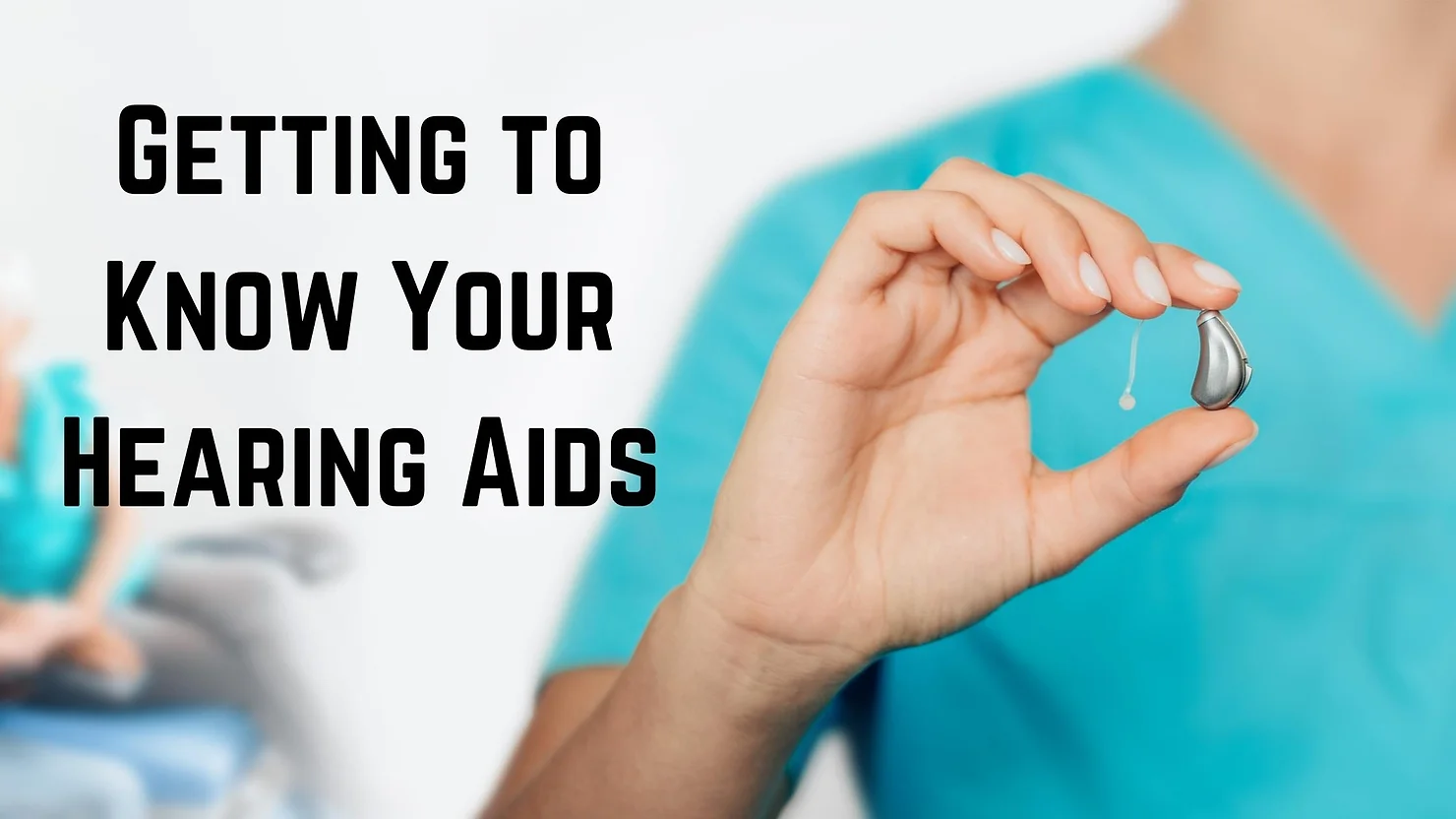
If you are on the journey of getting new hearing aids, congratulations on taking action to transform your hearing health! Hearing aids are such an important investment in your health and wellness. Designed to absorb, amplify, and process sound; hearing aids provide the auditory system (the body’s system for hearing) significant support. This support helps maximize an individual’s hearing capacity which offers countless benefits including strengthened communication. Today’s hearing aids offer a range of features, styles, and capabilities which are designed to easily integrate into daily life. Taking the time to get to know your hearing aids can help you optimize their use.
How do hearing aids work?
Though there are numerous options for hearing aids with different styles and features, all hearing aids consist of the same basic features. Four components make the basic structure of a hearing aid which are:
-
Microphone: absorbs sound from the environment and converts sound waves into electrical signals. Microphones also separate and process sound differently. This allows them to identify speech from background noise which delivers this sound with enhanced quality. The electrical signals are then sent to the processor or amplifier.
-
Processor: receives the electrical signals and converts them into digital signals that can be manipulated to meet the specific needs of the wearer. This includes amplification, reducing feedback, noise cancellation, and tinnitus masking features being added. The ways digital signals are manipulated depends on the specific type of hearing aid and the features it comes with. Once the adjustments happen, the digital signal is converted back into an electrical signal and sent to the receiver.
-
Receiver: also referred to as the speaker, the receiver strengthens the soundwave by converting the signal to audible sounds. The receiver is always directed towards the inner ear which is where the sound is delivered to.
The fourth component of hearing aids is the power source which is what keeps the device operating. Hearing aids are powered by disposable or rechargeable batteries. These devices use sophisticated and innovative technology to perform complex functions that truly transform hearing.
Types of Hearing Aids
Hearing aids also come in a range of styles that are useful to know about. This includes hearing aids that are worn in the ear or behind the ear. The type of device that is optimal for you depends on a few factors including the degree of hearing loss, lifestyle considerations, budget, and interest in technology. Common hearing aid styles include the following:
-
Behind the Ear (BTE): when you think of hearing aids, you likely imagine a device that is visible and worn behind the ear which is a BTE hearing aid. A component of this hearing aid is worn behind or on top of the outer ear and has a thin tube that connects to an earpiece worn in the ear. BTE hearing aids are typically intended for people with more profound hearing loss. Different types of BTE hearing aids include mini BTE and receivers in the canal.
-
In the Ear (ITE): these types of hearing aids are worn in the ear. During your hearing aid consultation appointment, after the specifics of your hearing loss have been diagnosed, custom molds are taken of your ear canal. These impressions are used to make ear hearing aid pieces that will fit perfectly in your ear. ITE hearing aids come in different sizes and are the smallest types of hearing aids. A few types of ITE hearing aids include completely in the canal and invisible in the canal which is the smallest hearing aid.
Your hearing healthcare provider will thoroughly discuss your options with you. During your fitting appointment, you will also learn all the details related to your hearing aid and be trained on how to use and maintain your device.
Hearing Aid Features
In addition to knowing how hearing aids operate and the different types of devices, it is also incredibly helpful to know about the range of features that your hearing aid comes with. This includes Bluetooth connectivity, tinnitus masking features, noise reduction capabilities, voice recognition, and accompanying smartphone apps. Additionally, hearing aids may come with accessories like remote control, directional mics, and portable charging units. Your hearing healthcare provider will discuss these technologies with you and demonstrate how to maximize them.
